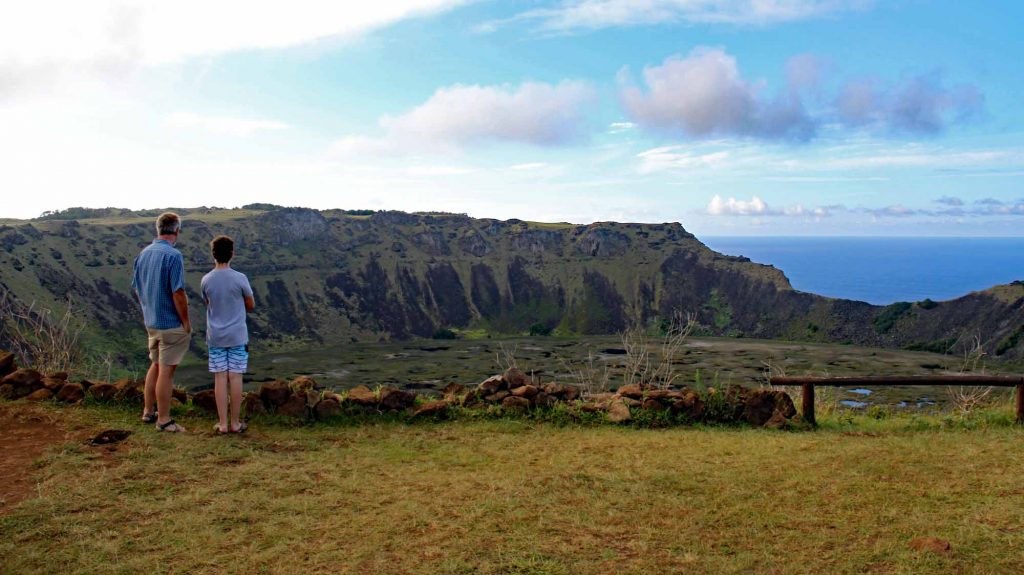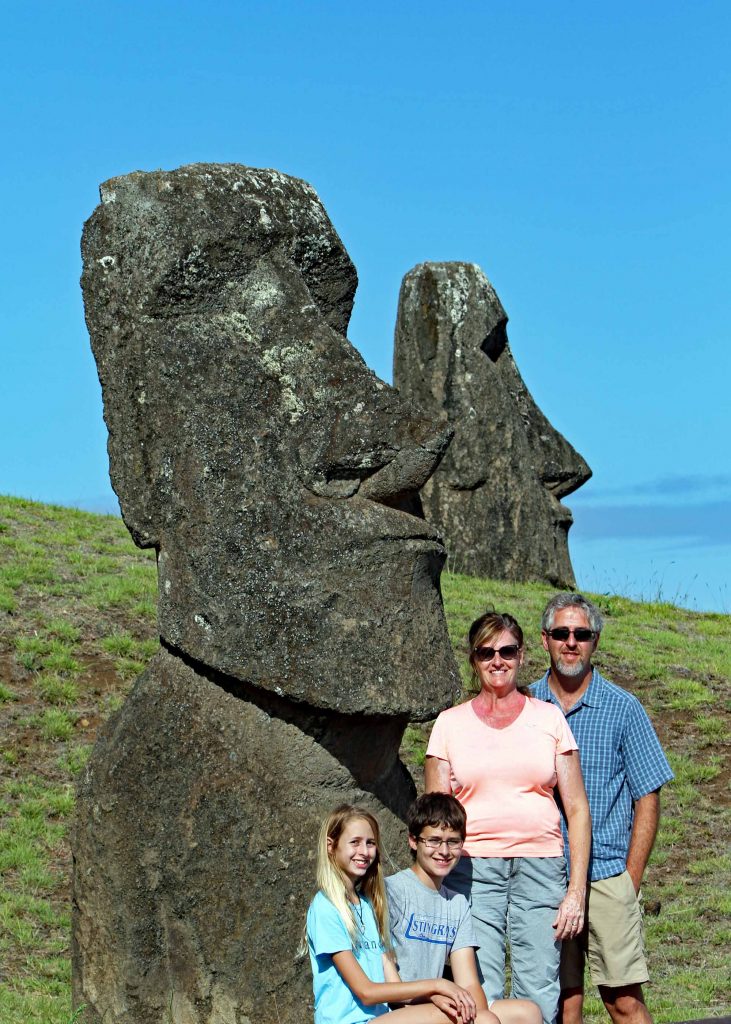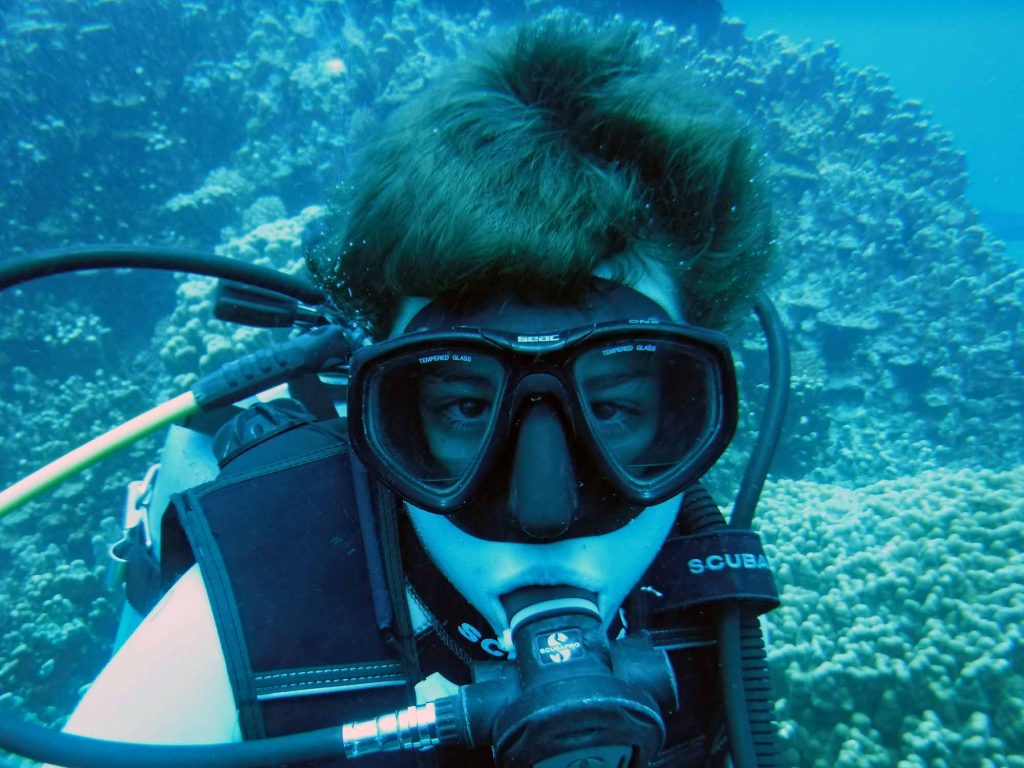Rapa Nui seemed appropriate for our final destination on this 6-week journey. Southern Patagonia and Antarctica can certainly be described as remote, and Rapa Nui practically defines the word. It was a 5-hour flight from Santiago to reach Rapa Nui (also known as Easter Island); the only other flight arrives once weekly from Tahiti, which is even farther. The nearest populated island, Pitcairn, is almost 2000 kilometers away, and this is an island of only 50 inhabitants.
It is obvious on arrival that Rapa Nui is a Polynesian island: green island, blue ocean, fragrant lei welcome. It is also obvious that this isn’t Hawaii, or even Tahiti. No big hotels, no fancy restaurants, no fancy anything, really. Rapa Nui is small, only 24 kilometers across at its widest. There are as many horses wandering wildly on the streets as there are cars. The harbor contains only a dozen small boats with outboard motors. Air conditioning has yet to reach the island, a luxury that was missed in the heat of their summer. It is not a beach destination, although it does have a nice beach–but only one. Finally, it is quite clear that this isn’t Hawaii when you are greeted by a Polynesian offering you a lei–in Spanish.
Obviously, you don’t travel to Rapa Nui for any of these things. You go for the moai–the iconic heads sculpted from volcanic stone. And they are everywhere! Nearly a thousand of them are scattered around the island. Two stand in the middle of town–Hanga Roa–overlooking the harbor. Several stand before Anakena, the lone beach on the island. There used to be a Moai at the top of the Rano Kau crater, at the ceremonial center of Orongo, but that one now resides in the British Museum.

Rano Kau Crater, near the ceremonial village of Orongo.
We spent days traveling around the island, trying to catch as many of the historic sites as possible. By far the most spectacular, and largest, collection of moai are found at Rano Raraku, the volcanic crater where they all were quarried. This is where moai in all phases of construction and deterioration are strewn across the green slopes of the crater, with unfinished projects still firmly anchored in the open quarry.

Rano Raraku
After weeks of travel, Rapa Nui was also a place for rest and relaxation. We went diving one day and spent another at Anakena working on our sunburns. Except for the last, a spectacular end to a great journey.

Diving Rapa Nui

